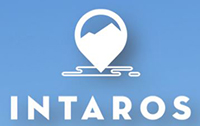
The AWI is a foundation under public law and member of the Helmholtz Association - the largest scientific organization in Germany. As an internationally respected center of expertise on polar and marine research, the AWI is one of the very few scientific institutions in the world that are equally active in the Arctic and Antarctic. It coordinates German polar research efforts, while also conducting research in the North Sea and adjacent coastal regions in Germany. Combining innovative approaches, outstanding research infrastructure and years of expertise, the AWI explores nearly all aspects of the Earth system - from the atmosphere to the deep ocean floor. In this regard, initiatives to better grasp the climate-related processes on our planet have increasingly taken center stage.
The AWI’s researchers operate various observatories that gather measurement data over longer timeframes. They research the atmosphere, ice, oceans and coasts. They explore the deep seas, the glaciers and the permafrost soils of the polar regions first-hand, and they analyze data from climate archives like sediment and ice core samples.
The Institute’s work is characterized by a high degree of international and interdisciplinary collaboration. Field research under extreme conditions is just as much a part of the Institute’s day-to-day work as are analyses using cutting-edge laboratory equipment and high-performance supercomputers. Having recognized that polar and marine research often poses serious logistical challenges, the AWI also maintains an excellent infrastructure, allowing it to make resources available for the national and international research communities – including several research ships, aircraft, and stations in the Arctic and Antarctic.
In cooperation with the Center for Marine Environmental Sciences (MARUM, University of Bremen), the AWI maintains the World Data Center for Marine Environmental Sciences (WDC-MARE). The data center aims at collecting, scrutinizing, and disseminating data related to Global Change and earth system research in the fields of environmental oceanography, marine geosciences, and marine biology. It focuses on georeferenced data using the PANGAEA® information system as its long-term archive and publication unit. Services supplied by this system are project data management, archiving, publication, and dissemination via visualization and analysis software.
Pursuing research in the polar regions and our oceans always goes hand-in-hand with the development of technological innovations. As such, technology transfer yields new products and services. Last but not least, the AWI is continually engaged in the education and training of young researchers, students, pupils or trainees.
Role in the project
The AWI operates the LTER (Long-Term Ecological Research) observatory HAUSGARTEN in the Fram Strait between NE Greenland and the Svalbard archipelago. The central HAUSGARTEN station at about 79°N, 04°E in the eastern Fram Strait (~2,500 m water depth) serves as an experimental area for unique biological experiments at the deep seafloor, simulating various scenarios in changing environmental settings.
Within WP3, the AWI will develop, validate and implement an experimental system that enables scientists to study impacts of ocean acidification on (benthic) marine organisms. Comparable “Free Ocean Carbon Enrichment” (FOCE) experimental set-ups are already operational or in preparation, however, a similar approach for the Arctic Ocean is so far missing. AWI will implement an "arcFOCE" for long-term experiments in deep arctic waters. arcFOCE will enable us to generate - for the first time - data on the resistance of arctic marine benthic organisms and communities to a reduction in ocean pH, thereby filling existing knowledge gaps.
Within WP3, the AWI will also contribute to the work planned for the INTAROS reference area North of Svalbard by adding various biogeochemical and biological instruments to the moored array foreseen to be installed within the projects time frame. Instruments include a Fast Repetition Rate fluorometer (FRRf), a nitrate sensor, an Underwater Vision Profiler (UVP), and sediment traps. The instruments will provide continuous measurements of nutrient concentrations, photosynthetic rates, particle and zooplankton concentrations as well as particle fluxes to the seafloor, thereby providing the opportunity to link productivity, ecosystem structure and particle dynamics to the tendency of the water column to sequester carbon.
Within WP2 and WP5, the AWI will provide general access to various data domains like geochemical, biological observational and occurrence data from Arctic marine and terrestrial environments by the PANGAEA data repository. PANGAEA data access methods include the pangaea.de website, a public PANGAEA web based metadata catalogue and data portal based on ElasticSearch full-text engine, documented web services and APIs for advanced interaction with PANGAEA digital data libraries. PANGAEA offers an integrated internet-based data publication service by using persistent and unique identification (DOIs), which ensures citability of data. PANGAEA also supports the integration of metadata within domain specific scientific portals (OBIS, GBIF) using appropriate exchange standards (OAI-PMH, DIGIR, OpenSearch etc.). Furthermore, PANGAEA guides data publication via Data Journals such as the Earth System Science Data Journal (ESSD) and Scientific Data by the Nature publishing group.
Alfred-Wegener-Institut
Helmholtz-Zentrum für Polar-
und Meeresforschung
